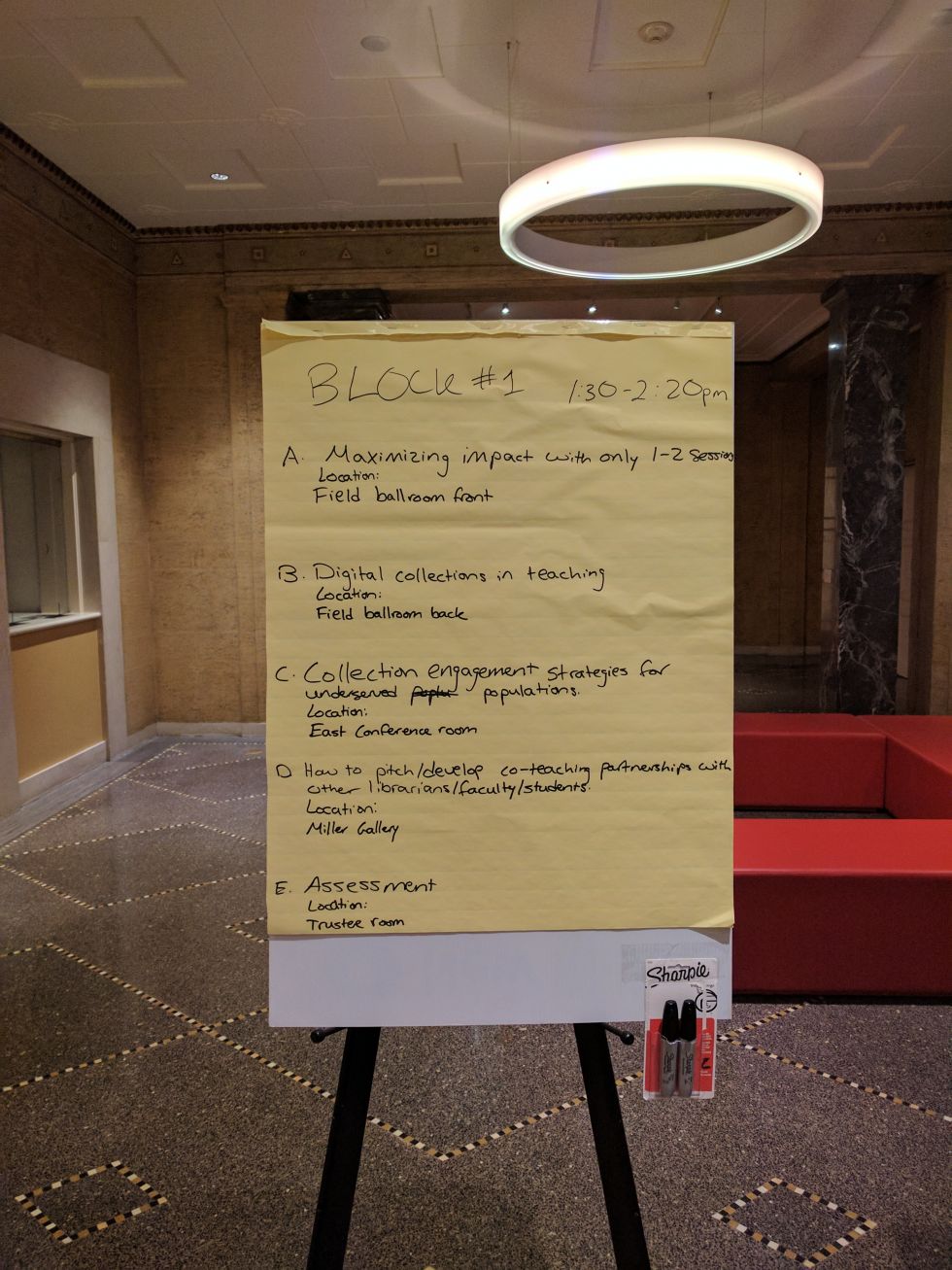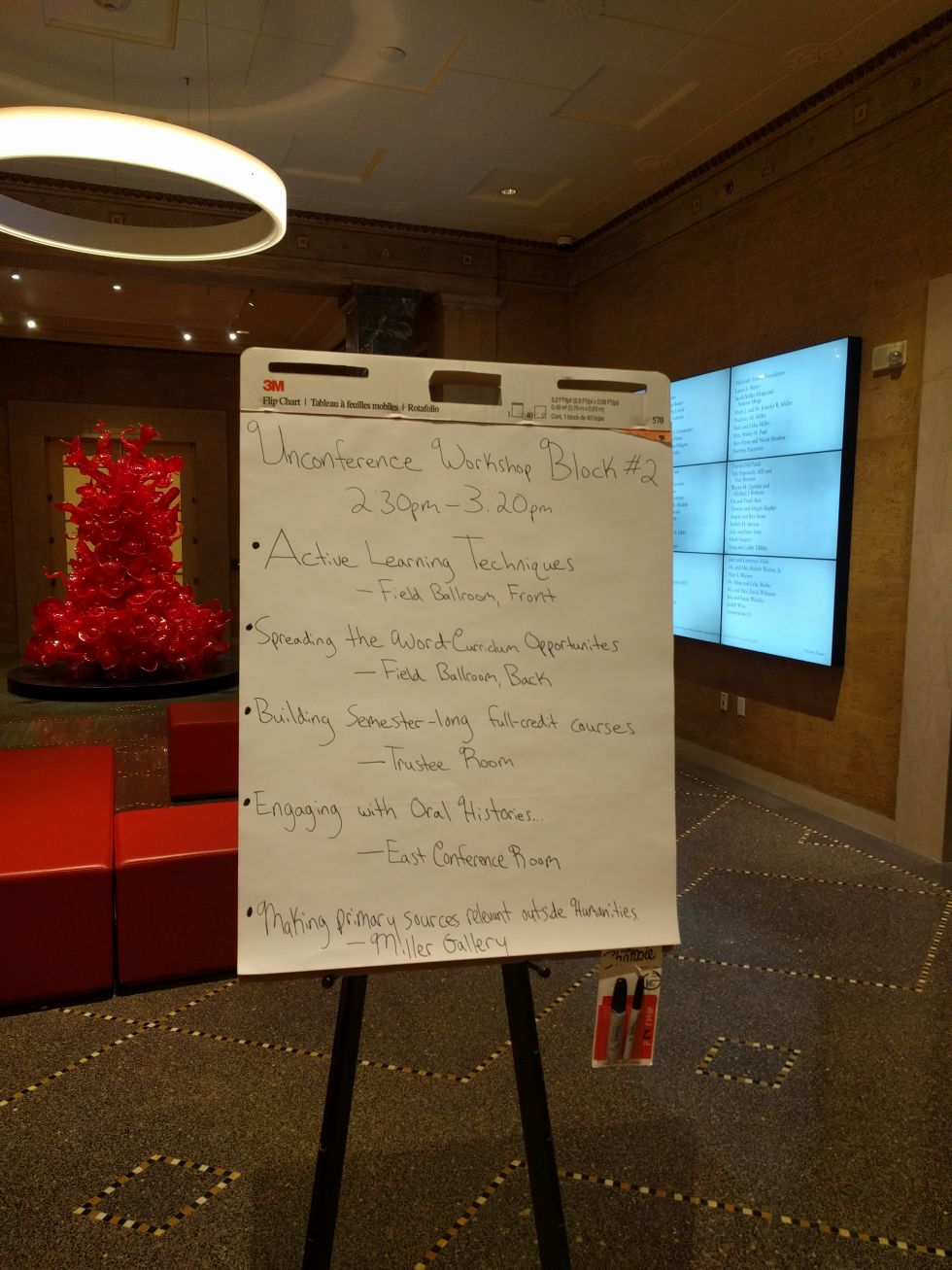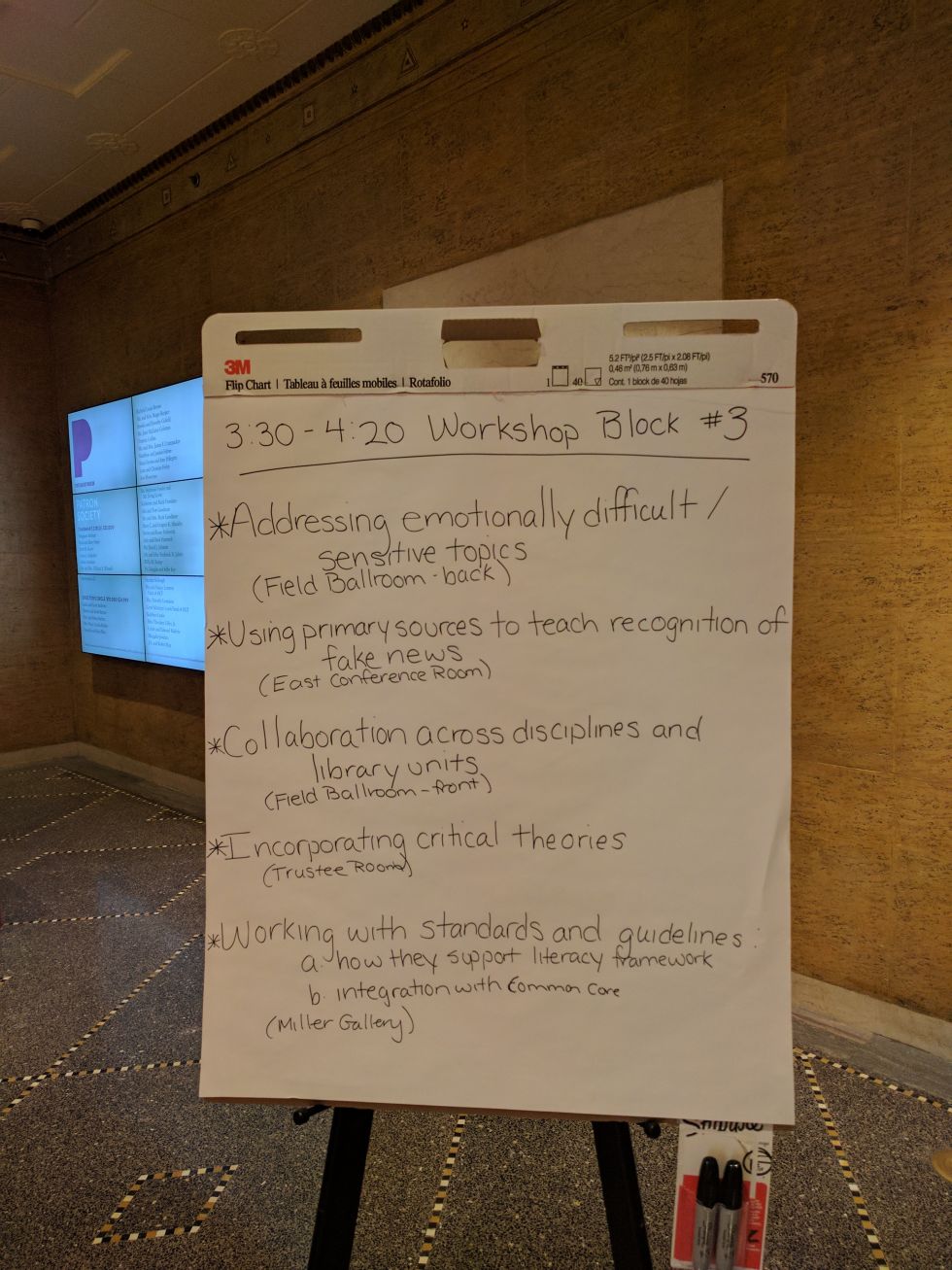Contributed by: Tess Amram, IMLS Project Archivist
The cataloging and metadata assignation portion of this project was the facet most relevant to my immediate career goals – I’m aiming for a career in cataloging, and I applied for this job in large part because it would expose me to cataloging standards I hadn’t yet had a chance to work with (i.e. standards for materials other than books). I hadn’t had much cause to use the Getty Art & Architecture Thesaurus before now, and I’m grateful for the opportunity to expose myself to controlled vocabulary outside of the Library of Congress Subject Headings (although I wish I had dived into Getty a bit earlier in the process – it would have saved me a lot of nitpicking at the end!).
One of the downsides of cataloging when you love it, I’ve found, is that it’s often difficult to know when to stop. There are a handful of photographs that I was unable to identify, both of gallery installations and of individual works, and it was very, very easy to slip into a Detective Mode Spiral and devote altogether more time than was wise trying to figure it out. Given the fact that most of the artwork depicted in the photographs is of ‘lost art’, it’s entirely possible that I wouldn’t have been able to identify a particular piece no matter what, but for a completionist like me, admitting defeat is quite frustrating.






